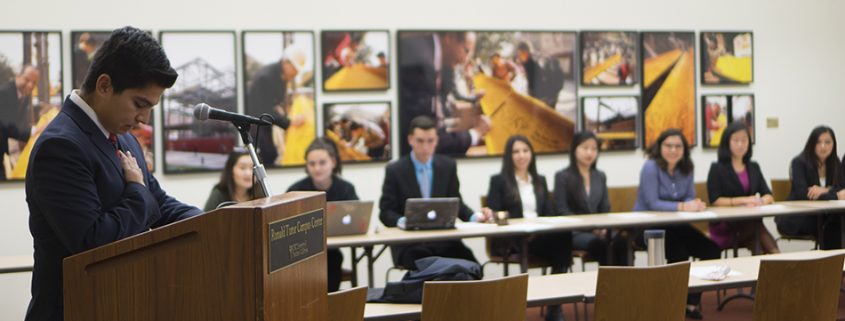Saucedo brings different style to USG Presidency
As the school year begins, it is easy to reminisce about the end of a groundbreaking era in university affairs, sculpted by the powerhouse tenure of Former Undergraduate Student Body President Rini Sampath. Whether or not you agree or benefit from Sampath’s policies, one thing is for certain: Sampath’s progressivism, outgoing demeanor and sheer resilience have made USC a more inclusive and diverse campus, catering to minorities, advocates of mental health and low-income students alike. With such impressive accomplishments, one might doubt the potential to grow and expand further. Nonetheless, the year begins with new leadership in the form of senior Edwin Saucedo, who undoubtedly will be a memorable and effective leader of the undergraduate student body. However, his style will not be characterized by the same passion or activist leadership as Sampath’s once was.
Sampath’s time in office led to a variety of changes; she adopted Saucedo’s pet project on creating stipends for low-income students who wished to attain leadership positions and carried it out. She was active in pushing for an increase in mental health awareness. Perhaps most memorably, she championed and co-authored the Campus Climate Resolution, which asked for a $100 million investment in increasing diversity departments, training and the much-needed revival of the diversity requirement, which as of last year was no longer mandatory. Wherever you stand on the spectrum with regards to support of these policies, one thing is undeniable: Sampath’s policies resulted in an increase in student engagement. This year, USG had the highest public attendance rates at senate meetings. As political engagement increased, students took initiative through petitions, protests and op-eds, marking a greater accessibility to USG which will only grow stronger with time. Her results changed the game.
To be sure, Saucedo has all the makings of a good USG President; after all, he did win his election in a landslide victory. But Saucedo acknowledges that he will not attempt to speak for all of our university’s various and diverse communities — as a leader, he wishes to listen to these groups before making policy decisions. Sampath pursued a strategy of activism on issues that counted right out of the gate — Saucedo’s style might prove to be equally as effective, albeit not quite as daring.
To illustrate the point, one can observe Saucedo’s project on stipends for low-income students. Saucedo began the project, and it was later carried out in full by Sampath during her own term. Saucedo did not trailblaze in campus activism, but recognized a core need of the student body. Sampath may have carried it out, but Saucedo proves his ability in one-to-one interaction with the student body, which he feels adds to his projects and work.
Where Saucedo can and will improve will be on the technical side — he picked his Vice President, Austin Dunn, for various reasons including Dunn’s experience in University Affairs. Saucedo wants to utilize Dunn’s time in working on issues such as housing and transportation — continuing Sampath’s work, in a sense. With Sampath, she would come visit your community, identify your needs, put her arm around your shoulder and then use her position as a platform of projection and get what you need. Though Saucedo may not pursue the same style of activist leadership, his calm style of listening and responding combined with his commitment to allowing his platform to change based on need will make him an ideal USG President.

